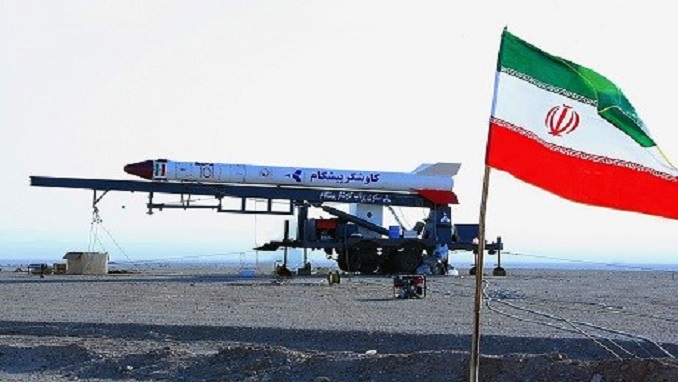
In an op-ed published by The New York Times, authors argue about the benefits and downsides of the Iran nuclear agreement, as well as ways to handle the situation. According to columnists, the nuclear deal achieved the best of the available alternatives. It cuts off Iran’s pathways to a bomb, sharply constrains its nuclear program for a long time, and provides for unprecedentedly strict monitoring and verification. Diplomacy avoided another war in the Middle East and averted the kind of crisis we now face with North Korea.
After two years of repeated affirmations of Iran’s compliance by our intelligence community and the International Atomic Energy Agency, American policy is at a fork in the road.
“The smart way to proceed would be to keep the world’s powers united and the burden of proof on Iran. That means working with partners on relentless enforcement; enhancing sanctions that punish Iran’s non-nuclear misbehavior, including its missile program and sponsorship of terrorism; working closely with Arab partners to deter Iran’s meddling in their internal affairs; and making plain our concerns with Iran’s domestic human rights abuses. It means using the diplomatic channel we opened with Iran, after 35 years without such contact, to avoid inadvertent escalation. And it means making it clear that after some restrictions in the deal expire, the United States and the world will still not allow Iran to advance its nuclear program in threatening ways.” the column reads.
Then there’s the foolish way — which the Trump administration seems perpetually tempted to pursue. President Trump has already declared his hostility to the agreement. On Wednesday, he said he had reached a decision about the future of the deal, without saying what it was.
Speaking to the United Nations General Assembly on Tuesday, Trump called it an “embarrassment” and “one of the worst and most one-sided transactions the United States has ever entered into.” This kind of posturing is turning Washington, rather than Tehran, into the diplomatic outlier, and sapping our partners’ will to keep Iran’s feet to the fire.
“The costs are already apparent. When the administration telegraphs plans to use its doubts about inspections as an excuse to leave the deal, it’s not surprising that the I.A.E.A. and our negotiating partners resist American requests to activate the deal’s provisions for access to suspicious military sites. And when Mr. Trump suggests abandoning this “bad” deal because the only “good” deal is one that magically covers all of Iran’s regional activities, it only becomes harder to mobilize international pressure against Iran’s Revolutionary Guard and its proxies like Hezbollah. By failing to operate in good faith, the administration has weakened — not strengthened — our hand.” authors underscore.
Furthermore, authors agree that if president Trump really wants to back out of the deal, he should express his stance, adding that “then he owes it to the American people to explain how he would block Iran from developing a nuclear weapon, curb its destabilizing behavior in the region, and prevent all the other calamitous consequences of his unilateralism. And fantasy scenarios where we get everything — and Iran gives up everything — will not suffice. We already have one nuclear crisis with North Korea. We don’t need a second one. The administration should back off from its dangerous folly, commit to the deal, enforce it to the hilt, and work with our partners on a long-term strategy to deal with Iran’s challenge.”
